.
European Robin (Erithacus rubecula), on the bank of the Lauch, above Herrlisheim, near Colmar: photo by Katz, 2007
European Robin (Erithacus rubecula), Milton Country Park, Cambridgeshire: photo by DemonTraitor, 2007
- Who killed Cock Robin?
- I, said the Sparrow,
- with my bow and arrow,
- I killed Cock Robin.
- Who saw him die?
- I, said the Fly,
- with my little eye,
- I saw him die.
- Who caught his blood?
- I, said the Fish,
- with my little dish,
- I caught his blood.
- Who'll make the shroud?
- I, said the Beetle,
- with my thread and needle,
- I'll make the shroud.
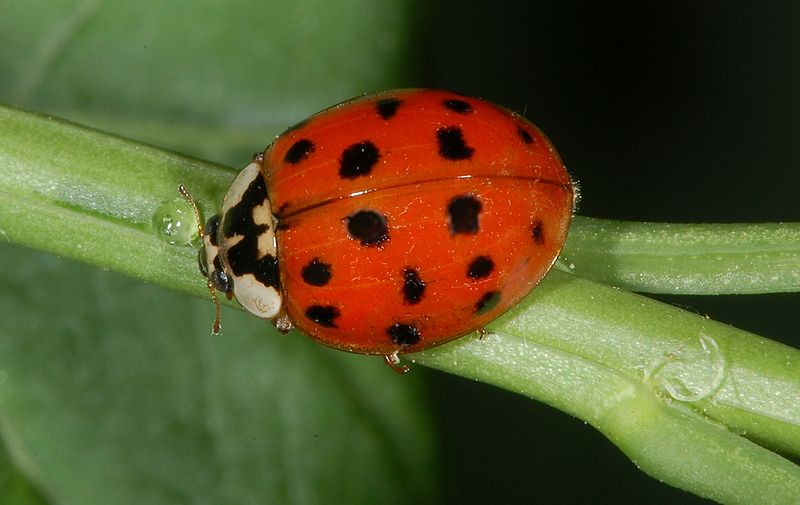
Lady Beetle (Harmonia axyridis): photo by Fritz Geller-Grimm, 30 April 2007
- Who'll dig his grave?
- I, said the Owl,
- with my pick and shovel,
- I'll dig his grave.
- Who'll be the parson?
- I, said the Rook,
- with my little book,
- I'll be the parson.
- Who'll be the clerk?
- I, said the Lark,
- if it's not in the dark,
- I'll be the clerk.
Rufous-Naped Lark (Mirafra africana athi), Sweetwaters Game Reserve, Kenya: photo by Jerry Friedman, 2007
- Who'll carry the link?
- I, said the Linnet,
- I'll fetch it in a minute,
- I'll carry the link.
- Who'll be chief mourner?
- I, said the Dove,
- I mourn for my love,
- I'll be chief mourner.
A pair of White-Winged Doves (Zenaida asiatica), considering a nest site near a Yucatán cenote: photo by Jim Conrad, 2008
- Who'll carry the coffin?
- I, said the Kite,
- if it's not through the night,
- I'll carry the coffin.
- Who'll bear the pall?
- We, said the Wren,
- both the cock and the hen,
- We'll bear the pall.
- Who'll sing a psalm?
- I, said the Thrush,
- as she sat on a bush,
- I'll sing a psalm.
- Who'll toll the bell?
- I said the bull,
- because I can pull,
- I'll toll the bell
- All the birds of the air
- fell a-sighing and a-sobbing,
- when they heard the bell toll
- for poor Cock Robin.
British Robin (Erithacus rubecula melophilus), Merrion Squre, Dublin: photo by David Jordan, 2008
Is the sad tale of Cock Robin a murder archetype in a nursery rhyme, a kind of children's story employed by a culture to resolve issues symbolically through catharsis, so that violence and danger, while recognized as real, may be moved off, in the child's mind, from the world of humans, where evil exists, to that of nature, where there had previously been an innocence that would, in a world like this one, be perhaps too much for a grown person to bear?
European Robin (Erithacus rubecula), on the bank of the Lauch, above Herrlisheim, near Colmar: photo by Katz, 2007
Who Killed Cock Robin? origin unknown, first published in Tommy Thumb's Pretty Song Book, c.1744, extended version first published c. 1770


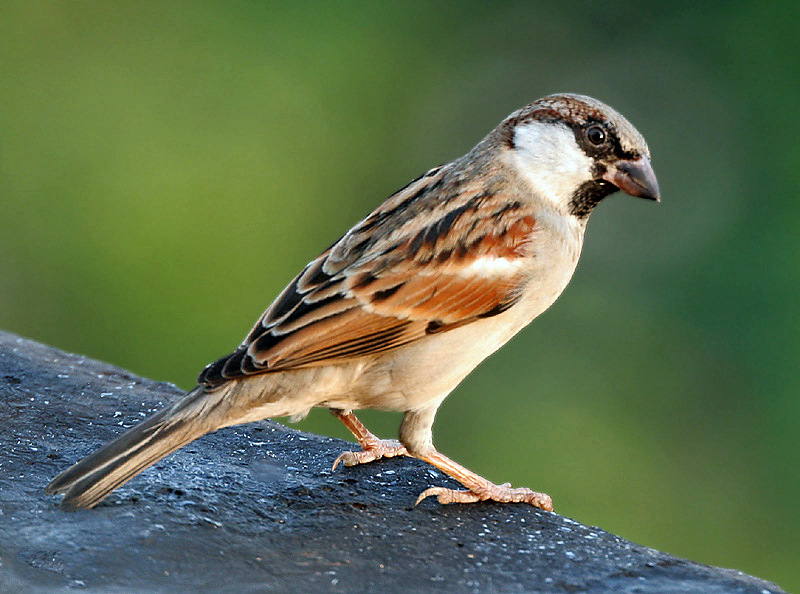

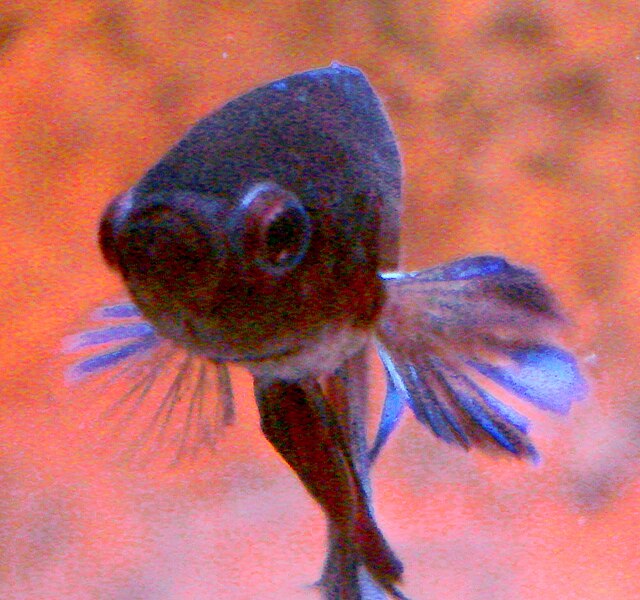



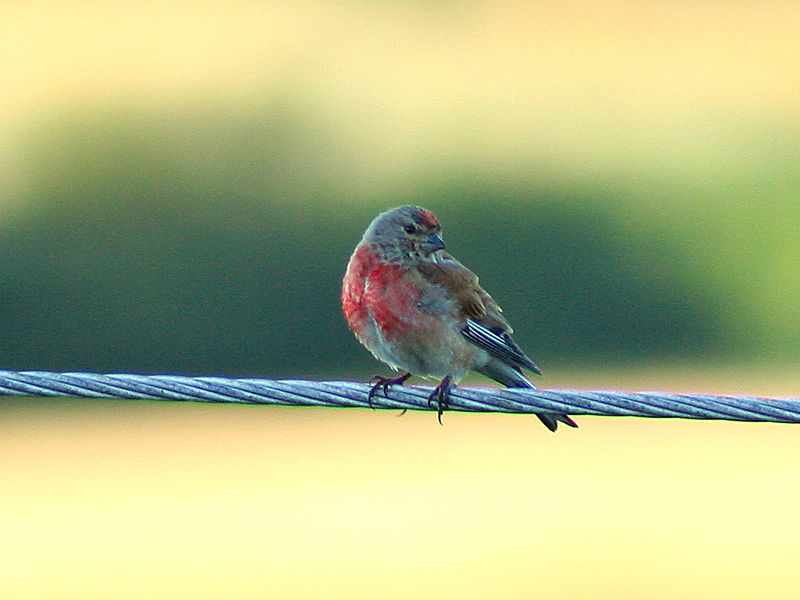

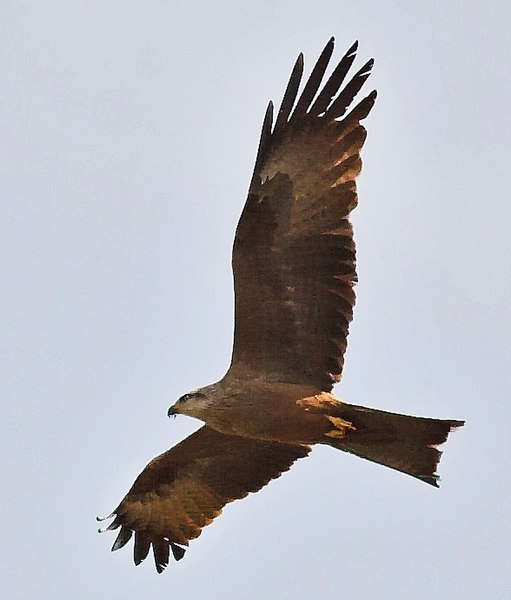
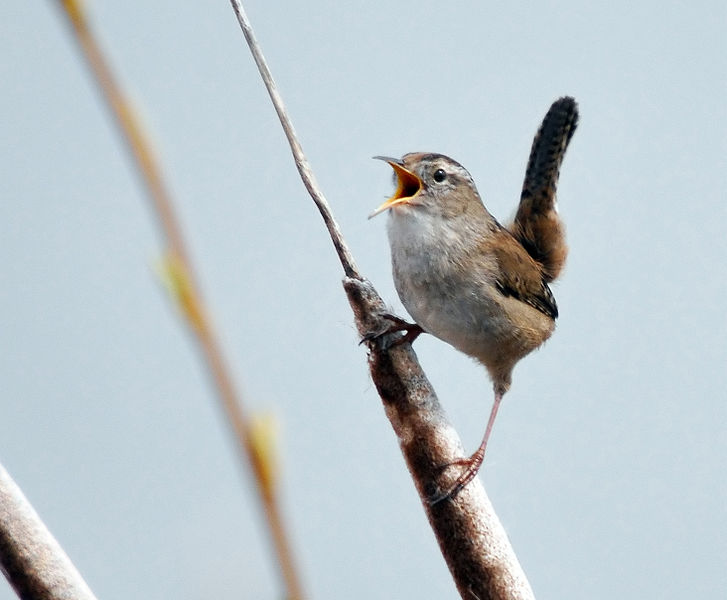

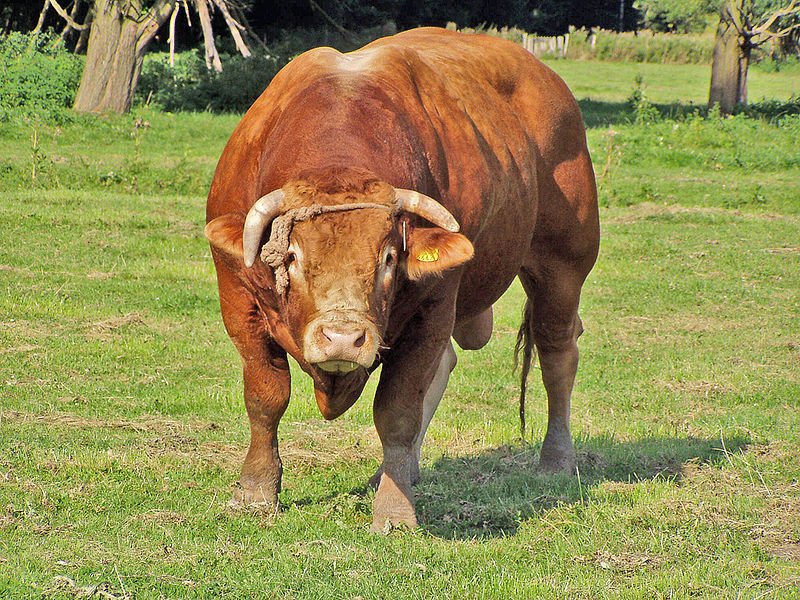
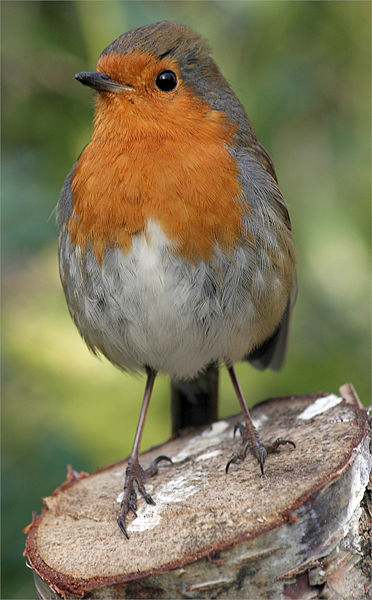



17 comments:
I enjoyed this so much...!
This is a wonderful rendering, a timeless and timely reminder, and a very plausible interpretation/surmise.
Tom,
Beautiful TO READ the whole of this one (who'd done that recently? or even thought of any of the 'verses' but the first one? especially next pictures of such possible cast of characters. . . .
6.28
blinding silver circle of sun above still
shadowed ridge, crow calling from branch
in foreground, wave sounding in channel
thought as things themselves,
distance between points
present state of the picture,
next to possible, to be
cloudless blue sky reflected in channel,
cormorants flapping across toward point
Thank you Lluvia, Curtis, Steve.
These lyrics go far, far back, and all sorts of parabolic historical readings have been applied. Surely some bits of history are reflected, as through a glass, though I have not been convinced by the recent internet "conclusion" that Cock Robin "is" Robin Hood (romantic as that speculation may be).
There is a sort of timeless pathos in the old children's tale, something delicate and fragile that is retained as a sort of mysterious essence: for want of better palabras, let me borrow these of Lluvia, referring, I take it, to the secrets of the poetic:
"Como la flor del damasco en primavera, tan pura, tan frágil, así, la diminuta vida se te ofrece, tú la tomas con mano descuidada y sin querer la rompes..."
Whatever of the poetic we find in anything, of course, most often has at least as much of "us" in it as of the thing -- "thought as things themselves" (Stephen) -- we find poetic; which necessary qualification informed the open question posed at the bottom of the post.
I wonder if you're aware of the association of this poem with Robert Walpole. The 1744 publication follows directly upon the fall of his ministry, known as the Robinhood. For some other images which could also be associated with this poem, you can see the post on Walpole at This Gaudy Gilded Stage.
Oh, and as I'm sure you saw your name embedded in this poem. I wonder if you've ever identified with the Lark, which, according to the always convenient Wikipedia, "[has] more elaborate calls than most birds, and often extravagant songs given in display flight (Kikkawa 2003). These melodious sounds (to human ears), combined with a willingness to expand into anthropogenic habitats — as long as these are not too intensively managed — have ensured larks a prominent place in literature and music, especially the Skylark in northern Europe and the Crested Lark and Calandra Lark in southern Europe."
John,
What's in a name? At least there's a bit of a lark in clerk. (Perhaps it would be better to say "was".)
The name and song of the skylark are so lovely, as per Shelley. But being able to sing so well frees them from the terrible demand of having to have a striking appearance. Which they do not. I hesitated... and then settled for that somewhat non-committal Tanzanian Rufous-Naped Lark.
There are a number of likely areas of historical/contextual interaction with this old rhyme, it seems.
The contiguity with the fall of Walpole's government can't be entirely accidental. My guess would be that the topical relevance made the ancient rhyme worth publishing.
William Rufus, killed by arrow in the New Forest, c. 1100, has been brought into the discussion. As has the legend of the Norse god Baldr.
The most interesting area of putative origin, to my mind, is that associated with the hunting and slaughter of the wren (Cutty Wren), in which the bird was used as a symbolic substitute for the human sacrifice of the Year King. A seasonal rite, related to Boxing Day, just after the winter solstice.
There's a good deal on this in The Golden Bough.
There is a curious variant legend having to do with the peasants' revolt of 1381, with the young King Richard, killed and fed to the poor, as lamented sacrificial victim.
Indeed it's probably the fact that all of the above has flown in and out of its vessel-like archetypal shape that has allowed the rhyme to last this long.
In some sense this post was done in reaction to the impressive (and also somewhat oppressive) anthropomorphizing illustrations by H. L. Stephens in his 1865 edition of The Death and Burial of Poor Cock Robin.
A poem that rhymes that I can enjoy. Delightful. And I say they are all guilty.
Thanks for providing the link to the Stephens illustrations, which are definitely impressive, oppressive and disturbing. It's great to see them and then to return to the images you chose.
Beautiful post, Tom. What struck me most about it - the idea of a crime mystery - I believe sort of morphs into a testifying or witnessing. Like going round the room speaking each our memories of the dead - and such a poetry to it, too.
And, only because it, too, is a memory, here is Walt Disney giving a "scholarly" intro to his Silly Symphony version. Besides Walpole, Disney interjects Catullus and John Shelton into the discussion. Of course, the cartoon, too, is readily available online.
Yes, in spite of the murder to which Sparrow confesses, there is something reassuring about the bird/animal community playing each its part to give poor Robin a 'proper send-off' as they used to say in London. And yet..note that nobody investigates the crime...were they, indeed, all complicit, like the cast of an Agatha Christie story?
'Hunting the Wren' is far more scary, though, I find, because it's people hunting the tiny bird, and again the words are cryptic and full of left-over bits of history: We're hunting the wren for Robin the Bobbin, we're hunting the wren for Jack of the Land..
Wonderful comments. Great link, Don. Oh yes, Zeph and Otto, I too hesitate to jump to conclusions about the identity of the culprit from the clues given. Everyone seems both compassionate and at the same time possibly complicit, if one falls into a superstitious mood. Agatha Christie indeed.
The Cock Robin Case is famously solved, after the Hollywood fashion, by Walt Disney. Disney, a royal Joker at the end of the Petrarchan Humanist Succession, blames the Cock Robin "crime" on Western Literature's usual suspect, Cupid/Love/ Eros. In the wonderful clip to which Don gives a link (above), Walt provides a bit of background on the Cock Robin story, mentioning Catullus (yet), the poet John "Shelton" (sic), and the Walpole government.
What he fails to mention is a Paul Terry cartoon version of Cock Robin made the year before. Terry's work came out in 1933; in 1934 Disney made his Silly Symphony version.
The "TerryToon" version is pretty weird. It's in basic b+w and is no graphic match for the later classic Disney animation by Ham Luske. But it has some crazy scenes. I love the skeleton in the bar as a guinea pig and the incredible whacko-jacko invisibilizing (?) potion. The villain here is a cat from outside the myth, who gets sliced and diced at the end (no kidding around, kiddies), while there is a miraculous happy ending for the reincarnated (stitched-up) Cock Robin.
Disney's Cock Robin became one of the great box office successes of 1934. Hitchcock saw it,
and, doubtless intrigued by the psychological questions opened up by the rhyme and the myth, planted a clip from it in a key scene late on in Sabotage (1936). Toward the end of this spy thriller, Hitchcock's heroine, Sylvia Sidney, whose innocent young brother has just been killed in a dastardly sabotage plot (in a scene with uncanny similarity to London bus bombings of a much later epoch), ducks briefly into a theatre; on the screen, the Disney cartoon is playing. Seeing Cock Robin shot is a symbolic re-enactment of the murder for her; she becomes hysterical.
Innocence cannot easily bear the discovery of Evil. The hunting and slaughtering of the Wren business is serious, deep, old, strange, and, as Zeph suggests, not cheering to think long upon. Hitchcock was working in the atmosphere of a nascent European Fascism. Behind Cock Robin there is a longer history of Northern European folkloric children's literature. It is a grimly Grimmish history, the woodwork thick with dark spectral presences; of which I think Hitchcock maybe had inklings, Walt Disney's Burbank studio scriveners maybe not so much.
But, again, the Disney cartoon was a huge success, and Sabotage one of Hitchcock's rare flops. Terrific movie all the same, you can get the whole thing free, incuding the Cock Robin clip-within-the-film-within-the myth-within-the-history, on IMDB among other places.
Tom,
What a history of all such things in these comments (and links -- how far has Disney 'fallen' since then, "Shelton" notwithstanding). Yes, H.L. Stephens is "impressive" but I prefer your bird photos (quails calling out there, the cormorants still flying). . . .
6.29
grey whiteness of fog against invisible
ridge, white circle of moon by branches
in foreground, sound of wave in channel
diameter of circle, relative
to result of experience
connected to moment, elapsed,
potential mass of which
cloudless blue sky reflected in channel,
line of 7 cormorants flapping across it
I've revisited and revisited this and just wanted to say that I think it's fabulous. Thanks, by the way, on behalf of our two bettas, Ruby and Rainbow, for choosing the betta for the fish role. Bettas never get their due. Fascinating the way the photo renders them in monumental size, which is clearly how they see themselves.
Steve,
Couldn't agree more re. the bird preference.
Curtis, your menagerie leaves us in awe.
Betta splendens was selected here largely for the sake of the myth, noting the ruby blood tone in that splendidly dishy individual. (But too I did like the personality in the frontal closeup.)
A few such beauties have swum through this blog. A common favourite, which may found if one scrolls down past the (equally photogenic in fact) King Penguin, Black-Naped Oriole and Amur Leopard, is this pretty in pink Betta.
In appreciation of if hopefully not blowing totally out of proportion the smidgeon of kind interest in this bit of antiquarian nursery rhymology (and with gnarled fingers crossed while blearily whistling in the outdated dark), I have further explored the superstition-soaked world of second-through-nth childhood here.
Tom,
I just read this to Johnny, the rhymes made him smile, and at the end he said "I don't think he died by a bow and arrow, because a bird wouldn't have a bow and arrow, and also because a bird wouldn't now how to shoot a bow and arrow, because he doesn't have hands, he just has wings" ---
Inspector Johnny should have been called in on this case at a much earlier stage of the proceedings.
When we are children, we incorporate both nursery rhymes and fairy tales without any questions. As adults, we are shocked to find what they really hide.
What a witty post!
Post a Comment